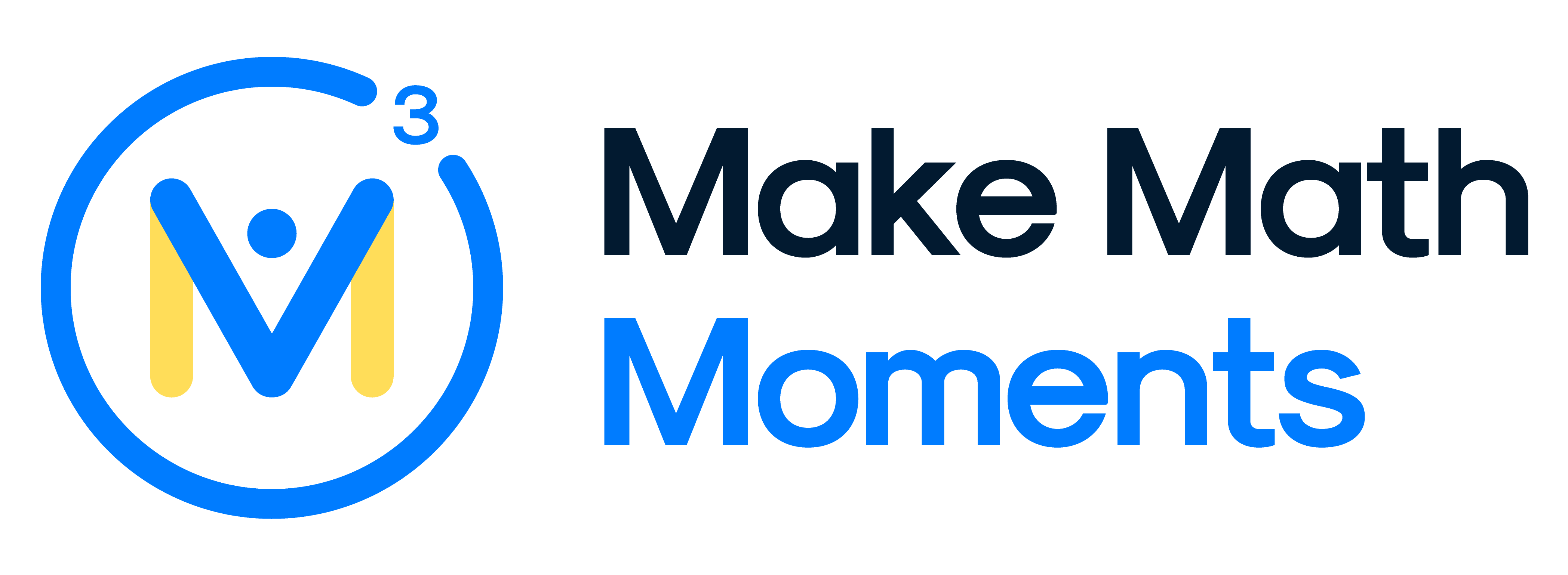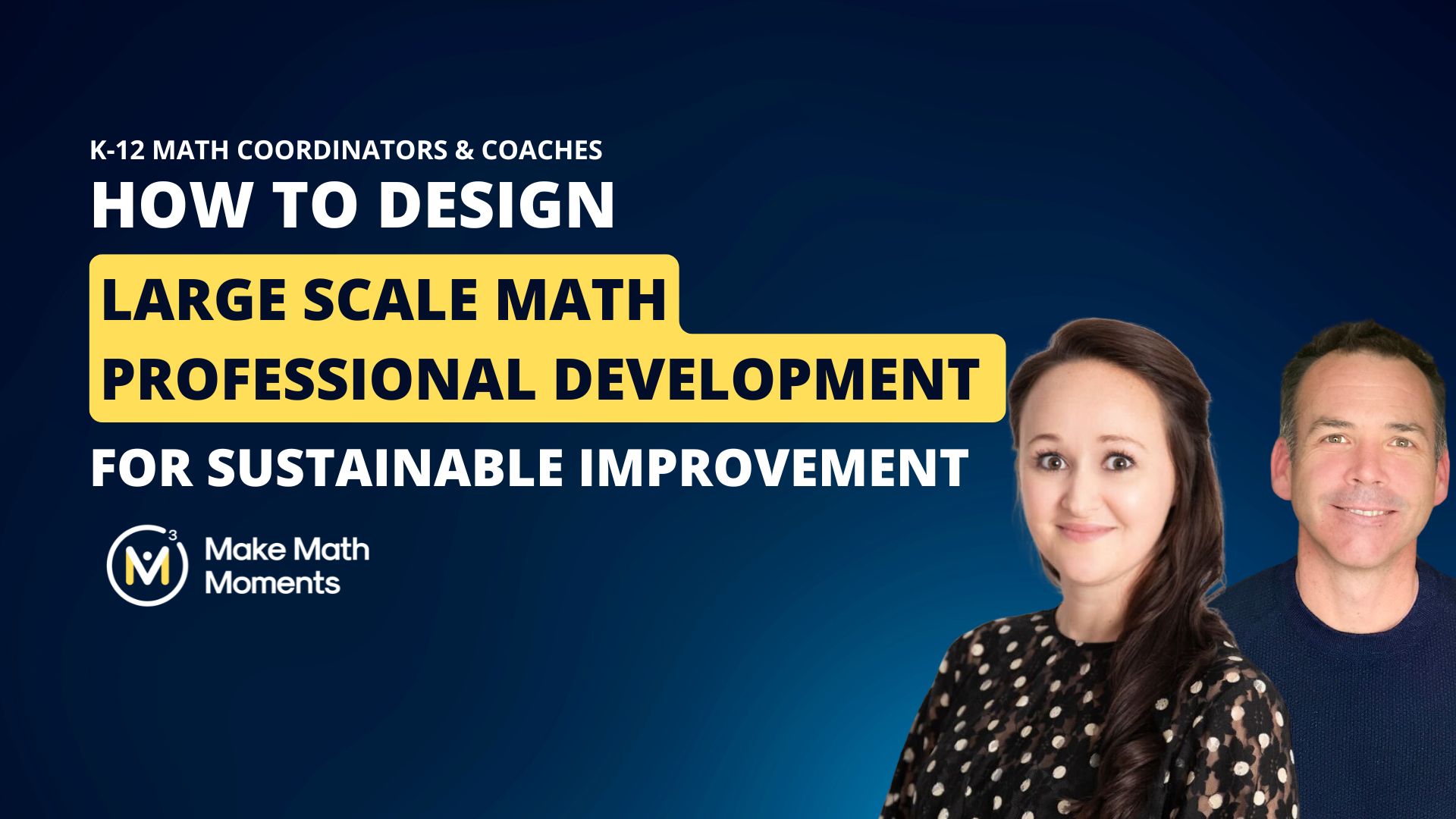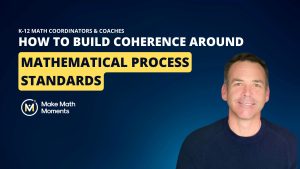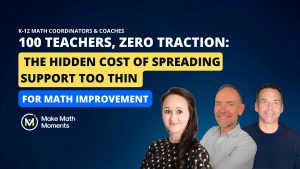When a PD session truly lands—when teachers are energized, ideas stick, and classroom change takes root—it feels like magic. But more often, that magic is missing.
Without proper planning and sustainable thinking, teachers leave full-day PD sessions unclear on what to do next. Leaders struggle to connect PD to day-to-day practice. And when we look back months later, it’s hard to point to any real traction. That’s because most large-scale PD is still designed as an event, not a catalyst.
In this post, we’ll show you how to shift away from the “one-and-done” model and design PD that acts as an engine—driving awareness, building collective understanding, and fueling sustained instructional improvement. We’ll explore research-based practices and highlight real-world strategies to ensure your sessions don’t just inspire—they generate momentum that lasts.
The Case Against “Drive-By” PD
Research is clear: one-off sessions rarely lead to lasting impact. A meta-analysis by Yoon et al. (2007) found that professional development programs producing significant gains in student achievement typically provided 30–100 hours of learning over 6–12 months. Without follow-up, modeling, and support, even the best single-day PD can evaporate by Monday morning. Darling-Hammond et al. (2017) build on this research, emphasizing that effective PD must be sustained, content-rich, and embedded within a system of support.
And yet, in many districts, pull-out PD remains the primary investment—often because it’s logistically easier to organize than sustained coaching or curriculum support. But the most well-intentioned events become costly detours when they aren’t aligned with what teachers actually need.
This is where many districts fall into a trap: relying solely on PD events as the primary lever for change.
On their own, these sessions are unlikely to shift long-term practice.
But when integrated thoughtfully with coaching and PLCs—and designed with clarity, engagement, and follow-through—they can be powerful catalysts.
In fact, when we reflect on systems that have fallen short—and those that have succeeded—a pattern emerges. The difference isn’t whether they hosted a large-scale PD day, but how they designed it and what happened before and after.
Take a common example from a large school district outside Houston Texas. Their original District Training Day followed the common blueprint: keynote, breakout sessions, and lots of teacher energy. But what their math coordinators learned—and later acted on—was that even an inspiring, well-run event can fail to generate change if it’s not deeply embedded in a broader plan for adoption.
They shifted from planning events to building a professional learning system—one that brought clarity, aligned with a vision, included the right people, and was supported over time through intentional structures. Their story illustrates the exact shift this chapter advocates for: from PD as a spark to PD as an engine.
The Old Way vs. The New Way
The Texas math coordinator’s experience isn’t unique. Districts across North America are discovering that traditional models of large-scale PD—no matter how polished—simply don’t stick without deeper system design. As you consider your own professional learning structures, it can be helpful to reflect on the prevailing approach versus what we now know leads to sustainable change.
The chart below outlines common hallmarks of the “old way” of doing PD—and the key shifts needed to move toward a more impactful, coherent, and equity-centered model. These shifts reflect both research-backed practices and the on-the-ground learning from districts like Katy ISD that have committed to doing things differently.
| Old Way | New Way |
| One-size-fits-all sessions | Tailored to roles (teachers, coaches, admin) with differentiated entry points |
| Standalone events | Aligned with broader coaching, PLCs, and curriculum goals |
| “Sit-and-get” lectures | Active participation in math, problem-solving, and discussion |
| No follow-up or feedback | Structured reflection and actionable next steps |
| Unclear objectives | Clear, outcomes-based goals tied to classroom practice |
| PD seen as a box to check | PD positioned as a launchpad for deeper system work |
These shifts aren’t just about format—they’re about purpose. Large-scale PD can be a valuable tool, but only if it’s part of a coherent improvement strategy with clear goals, relevant content, and a plan for support. Without those pieces in place, even the most well-designed day can leave teachers feeling more confused than empowered.
When It Goes Wrong: Harmful Consequences of Misaligned PD
When those critical design elements are missing, large-scale PD can backfire:
- Misalignment: The session doesn’t resonate with teachers’ current experiences or needs.
- Ineffective Facilitation: The facilitator lacks relevance or credibility with the audience.
- No Follow-Up: The day stands alone, with no plan for sustained support or implementation.
- Loss of Trust: Teachers feel like their time was wasted, or that leadership is out of touch.
- Fragmentation: Multiple departments plan isolated PD events without coordination or coherence.
The root issue is often a failure to define and communicate the “pebble” the PD is meant to solve—and to ensure that teachers recognize that connection. When PD doesn’t feel responsive to the real challenges teachers face in their classrooms, it risks becoming noise rather than momentum.
So What Does the New Way Actually Look Like?
By now, you’ve seen the contrast: the old model of one-size-fits-all, sit-and-get PD doesn’t generate the lasting change we need in math classrooms. In contrast, the new way reimagines professional learning as an engine for sustained growth—tailored, active, purposeful, and connected to a broader system of support. But what does that actually look like when you’re designing a PD session or coaching experience? In this blog post: 5 Key Considerations for Unlocking Impactful Professional Development For K-12 Math Educators we break down five high-leverage practices that define effective professional development for mathematics educators. These strategies put the “new way” into action—so you can move from inspiration to implementation, and from compliance to true impact.
READ: 5 Key Considerations for Unlocking Impactful Professional Development For K-12 Math Educators
Guiding Questions for Leaders Planning Large-Scale PD
When planning your next session, ask:
- What is the goal of this session?
Does it align to our district math vision and teacher needs? - Who is facilitating?
Do they understand our district’s context and challenges? - Who is the audience, and why?
Are they positioned to lead and implement the learning? - How will we support implementation?
What coaching, collaboration, or follow-up structures are in place? - How will we measure success?
Is it awareness, mindset shift, behavior change, or instructional practice? - Does this PD complement or compete with other district/school initiatives?
Are we being coherent in our improvement planning?
If you can’t confidently answer these questions—or if the answer is no to several—then it may be time to rethink whether the PD should proceed or how to revise it.
Large-scale PD isn’t inherently good or bad. It’s a structure—a tool—and like any tool, its value depends on how and why it’s used. When aligned to a clear purpose, facilitated by someone with credibility, and supported by a robust implementation plan, it can launch powerful waves of change.
But when used as a checkbox or a reactive measure, it can cause more harm than good.
The question isn’t should we do large-scale PD?
It’s what are we trying to achieve—and is this the best structure to get us there?
If you’re a district leader ready to bring coherence, clarity, and results to your math program, the Make Math Moments District Improvement Program can help.
📩 Book a call with our team to explore how we can support your vision for math success.
References
Darling-Hammond, L., Hyler, M. E., & Gardner, M. (2017). Effective Teacher Professional Development. Learning Policy Institute. https://learningpolicyinstitute.org/sites/default/files/product-files/Effective_Teacher_Professional_Development_REPORT.pdf?utm_source=chatgpt.com
Yoon, K. S., Duncan, T., Lee, S. W.-Y., Scarloss, B., & Shapley, K. (2007). Reviewing the evidence on how teacher professional development affects student achievement (Issues & Answers Report, REL 2007–No. 033). Washington, DC: U.S. Department of Education, Institute of Education Sciences, National Center for Education Evaluation and Regional Assistance, Regional Educational Laboratory Southwest.






